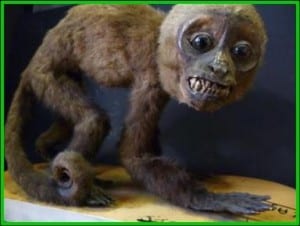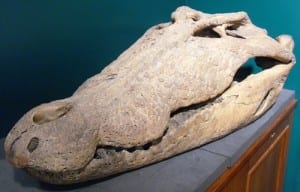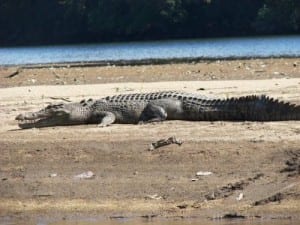Specimen of the Week: Week 142
By Jack Ashby, on 30 June 2014
 For someone who spends as much time as possible with wildlife I could be accused of being a bit wimpy about it on occasion. Things that are poisonous, slimy, smelly, flappy or pointy don’t worry me much, but when I might encounter things that are really big or really bitey I have been known to back off a bit. Many would argue that this is mostly sensible, but I have been with friends who lean out of the jeep to the tiger or follow the grizzly bear footprints, when I would lean into the jeep or walk away from where the bear tracks lead. Things don’t have to be big AND bitey to incite the conflictual desire to be around wildlife and the fear of it killing me; just being big will do.
For someone who spends as much time as possible with wildlife I could be accused of being a bit wimpy about it on occasion. Things that are poisonous, slimy, smelly, flappy or pointy don’t worry me much, but when I might encounter things that are really big or really bitey I have been known to back off a bit. Many would argue that this is mostly sensible, but I have been with friends who lean out of the jeep to the tiger or follow the grizzly bear footprints, when I would lean into the jeep or walk away from where the bear tracks lead. Things don’t have to be big AND bitey to incite the conflictual desire to be around wildlife and the fear of it killing me; just being big will do.
This week’s specimen is big AND bitey. It’s the animal I have to think about the most regularly as I spend a couple of months a year on fieldwork in tropical Australia; it makes collecting water or crossing rivers a bit of an adventure.
This week’s specimen of the week is…
**The saltwater crocodile skull**
1) At nearly 1m long, this skull is one of the largest single objects in the Museum, so it definitely is big. It’s no longer bitey as it has no teeth. This is fairly common with croc skulls as their teeth roots are open ended and fall out easily after death.
Saltwater crocodiles are the largest living reptiles on Earth, reaching up to 7m long (though unconfirmed reports have them up to 10m). A 7m crocodile would not fit width-ways across the Grant Museum.
2) They are also known as estuarine crocodiles. They live in the coastal sea, estuaries and rivers (though they tend not to go too far upstream), ranging from the east coast of India through southeast Asia and across northern Australia.
3) As you can see from the picture this skull has four sets of holes on the top of its head. First, at the front two pits that allow the long bottom teeth at the tip of the lower jaw to poke through when the mouth is closed. Second the nostrils and third the eyes, both positioned very high on the head so that the rest of the animal can hide below the water while it can still breath and see prey above the surface. Fourth, two pairs of temporal fenestrae, characteristic of non-turtley reptiles, but particularly pronounced here as they provide excellent anchoring points for their powerful, buffalo-crushing jaw muscles.
4) Crocodiles have interesting nostrils. In other reptiles air breathed in through the nose enters the mouth at the front, just under the nostrils. In mammals, we have a false secondary palate (the top of your mouth), with a hollow tube inside directing air to the back of the throat. This does two things: A) allows us to create an area of negative pressure in our mouths, and therefore suck (which is important as mammal babies need to suckle milk). B) allows us to breathe with our mouths full, which is important if you are endothermic (warm-blooded), and therefore have a high, oxygen-hungry metabolism that doesn’t appreciate waiting while you chew.
Modern crocodiles have a very similar secondary palate with air entering the mouth at the back of the throat, despite neither suckling milk or being endothermic. The fossil record shows, however, that their extinct relatives were endothermic, and this secondary palate is a remnant of that. It also acts like a snorkel in the water.
5) They aren’t fussy predators, and will hunt prey which are either in or out of the water. Young animals go for insects, amphibians, crustaceans and fish. Adults, hunting as ambush predators also take reptiles, birds and mammals including kangaroos, cattle and sheep, as well as scavenging on carrion. And not too infrequently people.
6) Bonus self-indulgent story: On a recent field trip to the far northwest of Australia we were camped in a rainforest near the mouth of a major river, at the point where the saltwater met the fresh. Because of the density of the forest we had to camp just off the banks of the river as that’s the only patch of flat ground the helicopter could drop us and our gear. Obviously this was saltwater crocodile territory, so we never loitered near the bank, and every time we collected water we went to a different point (for they learn), standing far back from the edge throwing a bucket on a rope. We only saw one or two each day time, but one night I shone my torch across the water and saw seven huge sets of eyes between me and the far bank.
Jack Ashby is the Manager of the Grant Museum of Zoology.
2 Responses to “Specimen of the Week: Week 142”
- 1
-
2
Lorna Steel wrote on 23 July 2014:
Crocodiles of The World (near Brize Norton in Oxfordshire) just got three females, and one of them has been laying eggs. I recommend a visit if you like crocs, alligators and caimans. They have a gharial too but it was still in quarantine when I went.
 Close
Close




Interesting blog. I don’t think I would have slept very well knowing those crocs were there. The males are big. I only saw females went I went to Kakadu and they were scary enough.